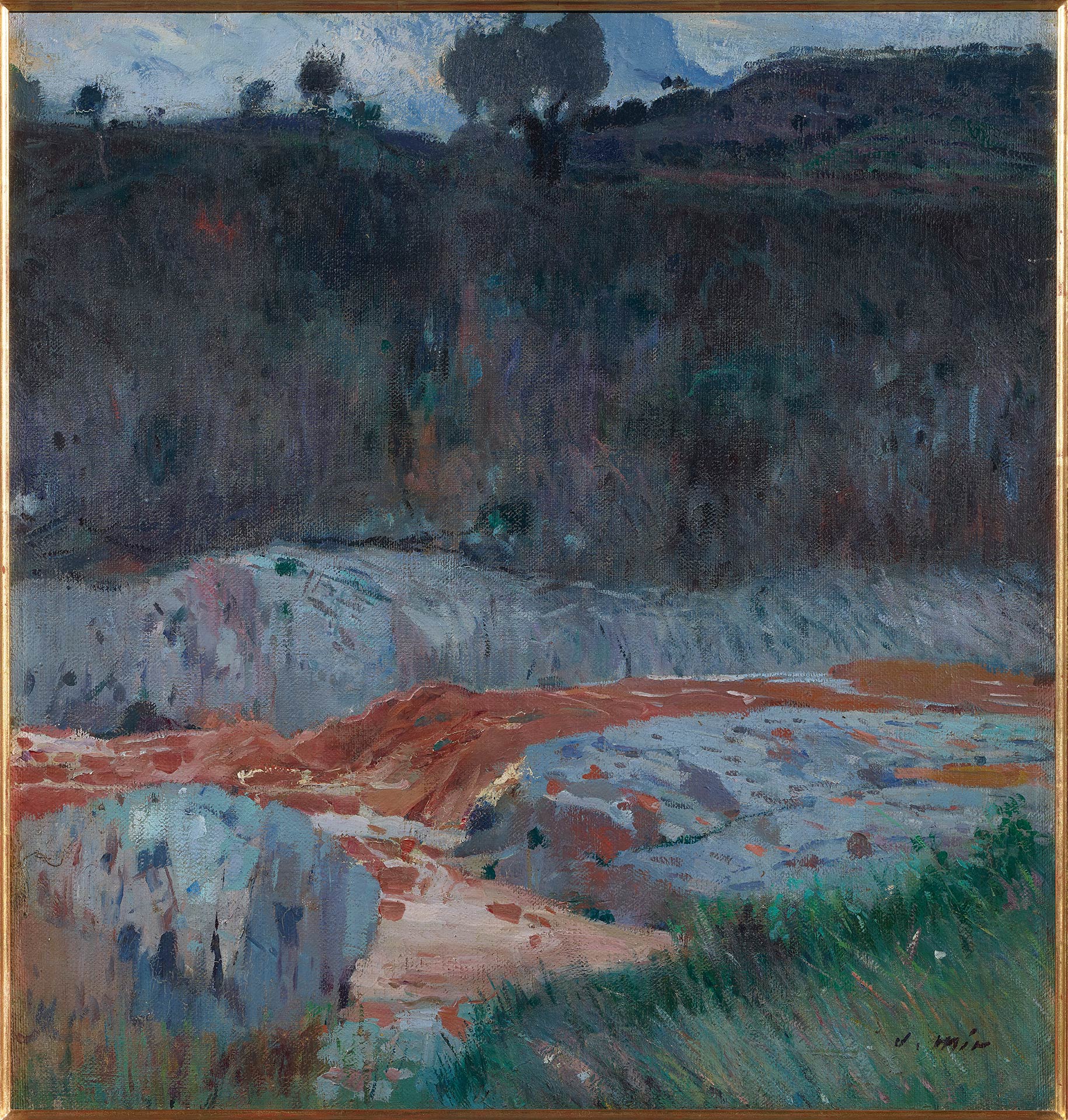
Joaquim Mir (Barcelona, 1873-1940)
Red Waters
Circa 1921
WORK INFORMATION
Oil on canvas, 107.5 x 101 cm
OTHER INFORMATION
Signed in the lower right-hand corner: "J. Mir"
Joaquim Mir was the greatest exponent of Catalan postmodernism, the one who most clearly succeeded in creating a language as modern as that of his most advanced European contemporaries. Gifted with a natural talent for painting, he managed to synthesise different stimuli and suggestions which, despite never visiting Paris—unusual for a Catalan artist in those days—spontaneously crystallised into a highly original pictorial style.
Isidre Nonell was a childhood friend, and like him Mir studied under Lluís Graner and attended the Llotja School without too much enthusiasm. He and Nonell also coincided in Colla del Safrà, the group that embraced the "suburbanism" imported from Paris by Ramón Casas and Santiago Rusiñol and produced several of the best artists of Catalan postmodernism.
Slopes of Montjuïc is an important oil painting from this youthful period. The luminous realism of this scene, reminiscent of the local tradition of Mas i Fontdevila, depicts a landscape with figures, one of them in the foreground. The composition is similar to that of The Cathedral of the Poor (1898, Carmen Thyssen-Bornemisza Collection, on long-term loan to the Museu Nacional d'Art de Catalunya), the youthful Mir's magnum opus, though it lacks the "social" content of our work.
Between late 1899 and 1903 Mir lived on Mallorca, initially accompanied by Rusiñol and later alone, gradually withdrawing into a grand yet inhospitable universe centred on the wild landscape of the Torrent de Pareis.
The Big Tree: Sa Calobra may have been painted during this period of retirement. The long brushstrokes still denote his proximity to the Belgian symbolist painter William Degouve de Nuncques, although the picture's more schematic conception suggests it was painted towards the end of his time on the island rather than at the beginning, when Mir still insisted on a very polished execution.
After a time in the asylum of Reus (1905–1906) due to a brain injury resulting from a fall on the island, Mir spent several happy and very productive years in the Camp de Tarragona region. In the second half of the new century's first decade, the best period of his career, Mir took reality and broke it down into patches of colour that were no longer Impressionist; instead, they represented a brand-new plastic concept. These patches, which form clusters of paroxysmal chromatic beauty, often attain a level of abstraction verging on non-figuration, before it was officially inaugurated by Kandinsky. Based on its execution, Spring pertains to the style of this period.
Red Waters was painted shortly afterwards, during the time Mir spent at Caldes de Montbui between 1919 and 1921. His old admiration for Rusiñol is still evident in the composition of this work, with a wide strip of nondescript earth dominating the scene. Here we see an energetic Mir, in line with the murky-toned Impressionism of his Colla del Safrà days but now the confident master of his medium of artistic expression.
The Acolytes' Garden: Montserrat is the product of his full maturity, exemplifying the consolidation of his work in a luminous realism rendered with an agile, seamless control of oil painting technique, now far removed from symbolist echoes and personal experiments in the chromatic decomposition of reality. [Francesc Fontbona]

